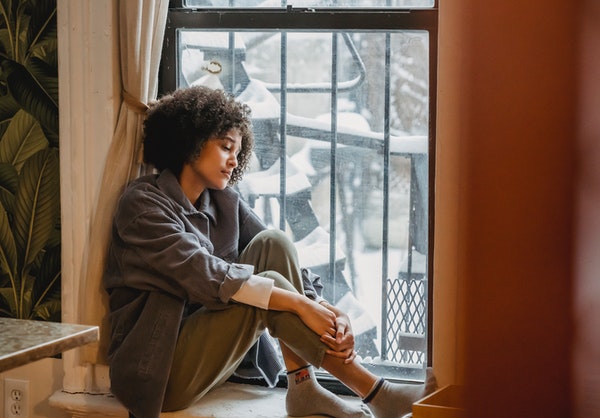
Photo by Liza Summer from Pexels.
Now that we are officially entering fall, the amount of sunlight that we see during the day will decrease. While there are some big advocates of the fall and winter seasons, there are also those who will begin to experience Seasonal Affective Disorder (SAD). SAD is a form of depression provoked by the change in seasons, especially fall and winter.
As it gets darker and the amount of sunlight decreases, SAD sufferers experience significant mood shifts. The Cleveland Clinic gives a few reasons why that might be.
- A change in the biological clock. As a result of diminishing sunlight, your biological clock may begin to change. Since your biological clock is responsible for regulating your mood, sleep, and hormones, your emotions can become harder to manage and predict.
- Signs of chemical imbalances. One of the chemicals that works to communicate messages throughout our body is serotonin. Serotonin is one of the main contributors to our happiness. Less sunlight equals less serotonin. Therefore, seasons without much sunlight cause those levels to drop and affect the mood.
- Deficiencies in Vitamin D. Serotonin levels are also affected by Vitamin D. Vitamin D is produced with the help of the sun, making less sunlight paramount in changes in serotonin and mood.
- Producing excessive melatonin. Sleep patterns are determined by the amount of melatonin in one’s body. Insufficient sunlight can create an overproduction of melatonin in some people, making them feel sleepy and sluggish.
Light Therapy as Treatment
Light Therapy is often used as a treatment for Seasonal Affective Disorder. Light therapy entails exposure to artificial light, making up for the lack of sunlight that occurs during the fall and winter months.
The only equipment required for light therapy is a light box, which should be discussed with your doctor before purchasing. You are able to proceed with therapy while completing daily tasks. It works the best by entering your eyes indirectly, as direct contact can cause harm to the eyes.
With light therapy, there are a few main components that ensure its effectiveness, such as light intensity, duration, and timing.
- The intensity of the light. In treating SAD, the light box should be at 10,000-lux (the amount of light you receive) at 16 to 24 inches from the face.
- The duration of time spent doing light therapy. A usual light therapy session lasts about 20 to 30 minutes if you are using the recommended 10,000-lux light box. However, if you are using something with a lower intensity, treatment session times will need to last longer.
- The timing of scheduled therapy sessions. Your doctor should be able to recommend a schedule specific to you, but usually, light therapy is most effective when done in the morning upon waking.
Light therapy is not a fool-proof way of getting rid of Seasonal Affective Disorder. However, it can help alleviate the symptoms and provide some relief from the darkness of fall and winter. Consult with a trusted healthcare provider to discuss light therapy as a tool to eliminate symptoms of SAD.
Got Medicare Questions?
We hope that this information on light therapy and seasonal affective disorder is useful to you.
Let us help you answer your questions so that you can get back to the activities that you enjoy the most.
Call (888) 446-9157, click here to get an INSTANT QUOTE, or leave a comment below!
See our other websites:

